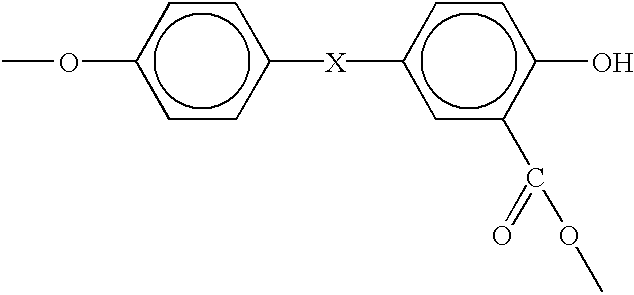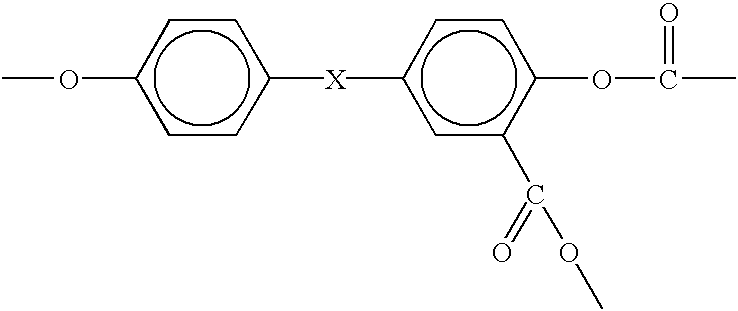Process for the production of branched melt polycarbonate by late addition of fries-inducing catalyst
a technology of branched polycarbonate and catalyst, which is applied in the field of production of branched polycarbonate composition, can solve the problems of large quantities of ill-defined transition materials having variable levels of branching, long time-consuming and labor-intensive polycarbonate production process, and large amount of branched fries products. , to achieve the effect of small further increase in branched fries and melt strength
- Summary
- Abstract
- Description
- Claims
- Application Information
AI Technical Summary
Benefits of technology
Problems solved by technology
Method used
Image
Examples
example 1
A batch reactor tube [was charged with 50 g of polycarbonate A and 2.5.times.10.sup.-6 mole of NaOH with respect to 1 mole bisphenolacetone under nitrogen. The mixture was heated to a temperature of 310.degree. C. and stirred for 20 minutes. After the melt mixing stage, a vacuum was applied to the system to a pressure of 0.5 mbar, and the reaction was continued for 30 minutes. After 30 minutes, the pressure was increased to atmospheric pressure and 13.5 ppm of butyltosylate (with respect to the polymer material) was added to the melt and stirred for an additional 5 minutes. After the reaction, the polymer was sampled from the reaction tube. As summarized in Table 2, the MIR was increased from 1.1 to 2.0.
example 2
A batch reactor tube was charged with 50 g of polycarbonate A and 7.5.times.10.sup.-6 mole of NaOH with respect to 1 mole bisphenolacetone under nitrogen. The mixture was heated to a temperature of 310.degree. C. and stirred for 20 minutes. After the melt mixing stage, a vacuum was applied to the system to a pressure of 0.5 mbar, and the reaction was continued for 30 minutes. After 30 minutes, the pressure was increased to atmospheric pressure and 40.5 ppm of butyltosylate (with respect to the polymer material) was added to the melt and stirred for an additional 5 minutes. After the reaction, the polymer was sampled from the reaction tube. As summarized in Table 2, the MIR was increased from 1.1 to 3.7.
example 3
Example 2 was repeated but instead of using sodium hydroxide, 7.5.times.10.sup.-6 mole of sebaccic acid disodium salt (D), with respect to 1 mole bisphenolacetone was added to the polymer. As summarized in Table 2, the MIR is increased from 1.1 to 2.8. ##STR7##
PUM
| Property | Measurement | Unit |
|---|---|---|
| temperature | aaaaa | aaaaa |
| temperature | aaaaa | aaaaa |
| polydispersity | aaaaa | aaaaa |
Abstract
Description
Claims
Application Information
 Login to View More
Login to View More - R&D
- Intellectual Property
- Life Sciences
- Materials
- Tech Scout
- Unparalleled Data Quality
- Higher Quality Content
- 60% Fewer Hallucinations
Browse by: Latest US Patents, China's latest patents, Technical Efficacy Thesaurus, Application Domain, Technology Topic, Popular Technical Reports.
© 2025 PatSnap. All rights reserved.Legal|Privacy policy|Modern Slavery Act Transparency Statement|Sitemap|About US| Contact US: help@patsnap.com



